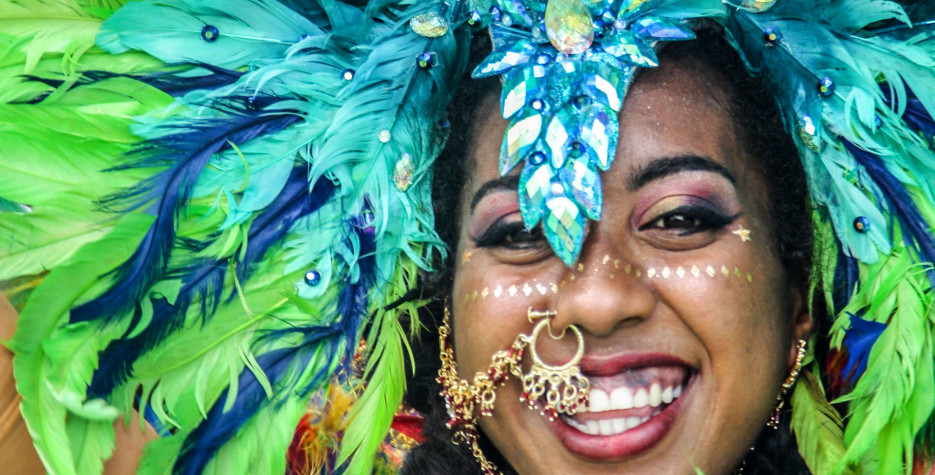When is Carnival in Trinidad?
Carnival in Trinidad and Tobago takes place on the traditional dates in the run-up to Lent.
The Monday and Tuesday before Lent begins on Ash Wednesday are not public holidays in Trinidad and Tobago, but most businesses are closed. Due to the parades, it is normally a school holiday.
History of Carnival in Trinidad
In the late 1700s, French immigrants moved to Trinidad to run plantations, bringing with them enslaved Africans.
During the carnival season, white plantation owners staged masquerade balls, dressing up as black plantation workers and enacting aspects of plantation life.
After full emancipation in August 1838, freed Africans in Trinidad embraced Carnival as a means of asserting their identity and expressing their beliefs. Masquerade, song and dance were used to mock the ruling powers and to highlight continuing social inequalities.
Moko Jumbie
In the Caribbean, a Jumbie is a ghost or spirit. For African Caribbean people, the Moko Jumbie also represents the ancestors of the displaced peoples of Africa.
Moko Jumbie figures on stilts have been a key feature of Carnival in Trinidad since the early 1900s. Oral traditions describe how the Moko Jumbie waded across the Atlantic on tall stilts to protect Caribbean villagers from evil forces.
Traditionally wearing masks and long skirts or trousers over the stilts, the figures also appear at other community celebrations such as the Emancipation Day parade and harvest festivals.
Devil Mas
Paramin, a remote village in the north-western part of Trinidad, is the home of the blue devil, a unique traditional Carnival character.
On Carnival Monday night, the hills of Paramin come alive with the annual blue devil masquerade competition, as rhythms ring out from villagers with wooden sticks beating discarded metal biscuit tins.
The origins of the devil masquerade - or "mas" for short - date all the way back to the days of slavery.
The original term for devil mas is "Jab Molassie," which is French patois for "Molasses Devil".
The name describes the sticky black substance the character was covered in, which in the old days was molasses. Nowadays he could be covered in pitch oil [kerosene], mud, cocoa and come in a variety of colours like blue, red, green, silver etc," he adds.
Freed slaves chose the devil to portray how they viewed slave owners.


